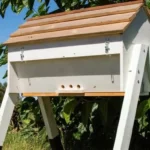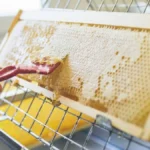You get observation hives and then you get cool observation hives! Observation hives are a lot of fun – they let us watch the bees do their thing and get insights into how their world works. If you thought a fish tank was fun…wait until you have an observation hive….hmmm…what if we combined the two? Read on to find out how to build the world’s coolest observation hives!
Observation Hive 101
A wild or managed beehive consists of a row of combs that are all next to each other. The combs are spaced apart using bee space, and this gives us our beehive. A row of combs with bees in between them. The combs in the brood nest are kept warm, and the combs next to the brood nest provide some insulation. The combs on the outside contain honey (hopefully).
We are not really interested in watching bees on honeycomb that much – we want to watch the queen lay eggs, workers feed her, workers dance and communicate where flowers are, and so on. This all happens in the brood nest. With an observation hive, we try to make a single layer of comb that has a brood frame or frames, and possibly a single honeycomb at the top. This is basically a slice through the hive!
Problems With Conventional Observation Hives
If we look at the above summary, the big problem that observation hives suffer from is that the bees struggle to keep the hive warm. Normally, brood combs would have other brood or pollen combs next to them that help to insulate and even provide warmth. What you end up having to do, if you build a conventional hive, is you have to make the bee space a bit thicker on each side of the brood comb so that bees can crowd there.
Because the bee space is incorrect, you will end up with a brace comb on the glass and the hive becomes a mess. Alternatively, if you keep the bee space within the correct tolerances the bees seem to largely be unable to keep the brood warm if the weather gets cooler. The result is a generally weak hive. In this regard, people put warmers over the hive or cover it in a blanket when not in use, and so on.
Here is a design for a conventional observation hive. I don’t like this design very much because the actual hive is a two-frame deep hive. This means that more often than not, the queen will be in the heart of the hive, and you don’t get to see anything very important about hive biology happening. You need to actually be able to watch the queen!! And you need to be able to watch the workers tending brood.
How Do We Make A Super Observation Hive That Works Properly?
Let’s think about this in an out-of-the-box way. Bees fly in the air. Air conducts heat. Air surrounds a hive. Air conducts heat and cools the hive. A beehive is basically a fish tank for bees… surrounded by air.

Thinking Laterally
An observation hive is a “fish tank” for bees. Now, what would happen if we combined a fish tank with an observation hive? We can keep tropical fish in the tank, and these fish allow us to keep the tank at the right temperature for the bees to be happy. We now have a fish tank with an observation hive in it…which means that the fish tank performs fish tank duties while the observation hive does observation hive stuff. There is always something to watch, and we have solved the “keeping the hive warm” issue and just made the whole project an order of magnitude more fun and cool.
I Am Not Going To Give You The Plans!!!
This sounds a bit nasty, but it is not. The big problem with the world right now is that we can download plans for simple things, copy them, make a facsimile of the original and then pat ourselves on the back, say “I did it” and give ourselves participation badges and then feel good. We have achieved nothing – this is taking a photograph of the Mona Lisa.
I Will Give You The Logic and You Can Fashion Something More Awesome – Your Own Unique Creation
We forget plans. If we learn logic, we will always have a plan. I have learned this the hard way in life, and it is why (before COVID) a lot of people flew me all over the place to help them solve problems. If you have logic, you can always have a plan to solve a problem. So today, we transfer the logic of this fish tank beehive abomination and you can create something that is really cool, unique, and YOU!
Materials Needed
You will need glass. With making a fish tank it is really important to use a decent thickness of glass – I tend to just use online guides such as this for my glass purchases. Once you have come up with your design, drop the cutting list at a glass shop and they will cut your order for you.
Silicon sealant and a caulking gun to deliver it.
A solid board and table on which to place the whole system. Make sure that this is a sturdy table. For my design, I made it such that we could crawl under the table and place our heads inside the beehive – surrounded by glass and fish. This was a remarkably trippy experience.
You will also need two fish tank heaters and two little fountain pumps to circulate the water around and keep an even temperature all around the beehive.
I found that this pool piping makes a nice flexible entrance pipe.
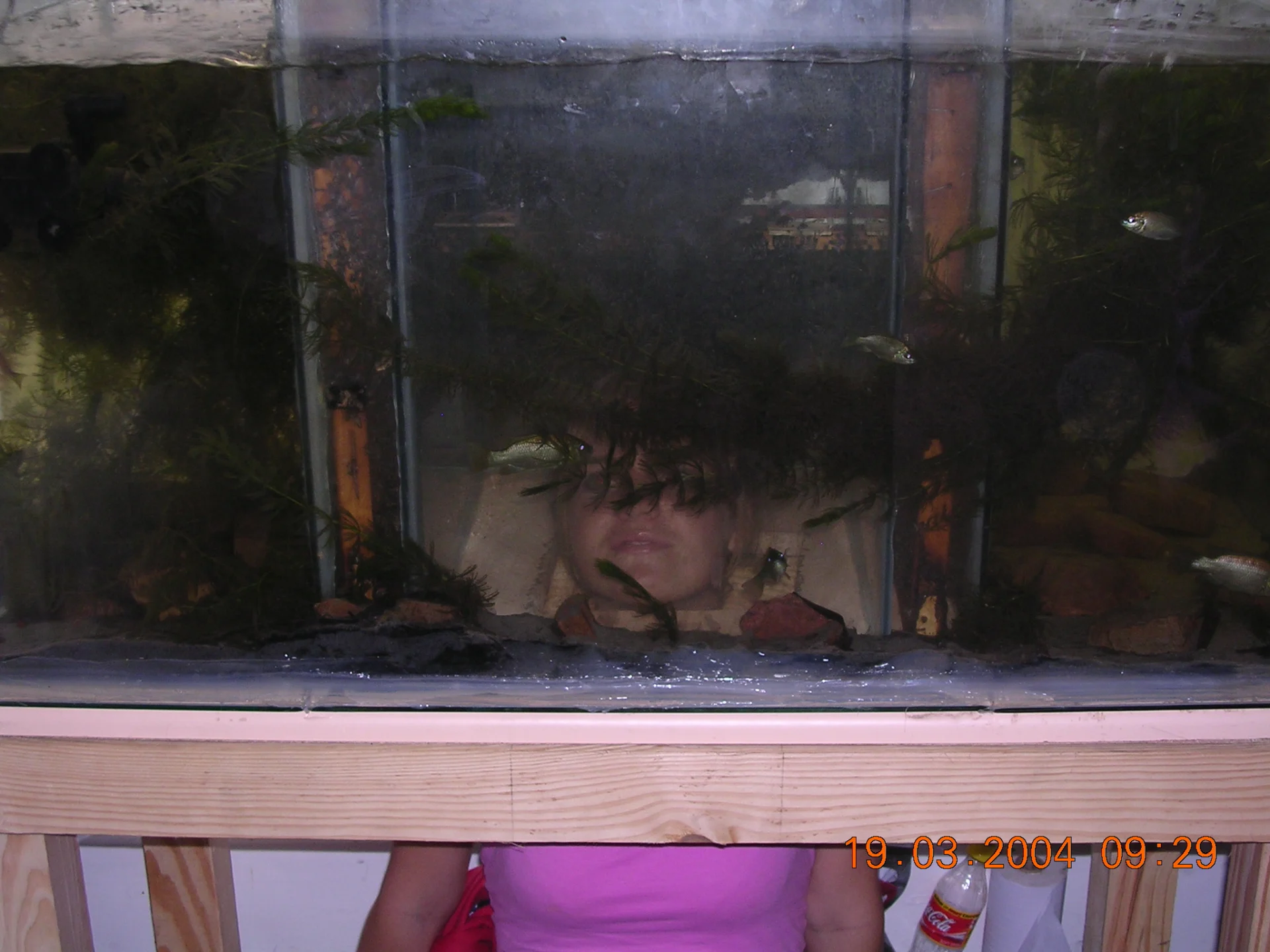

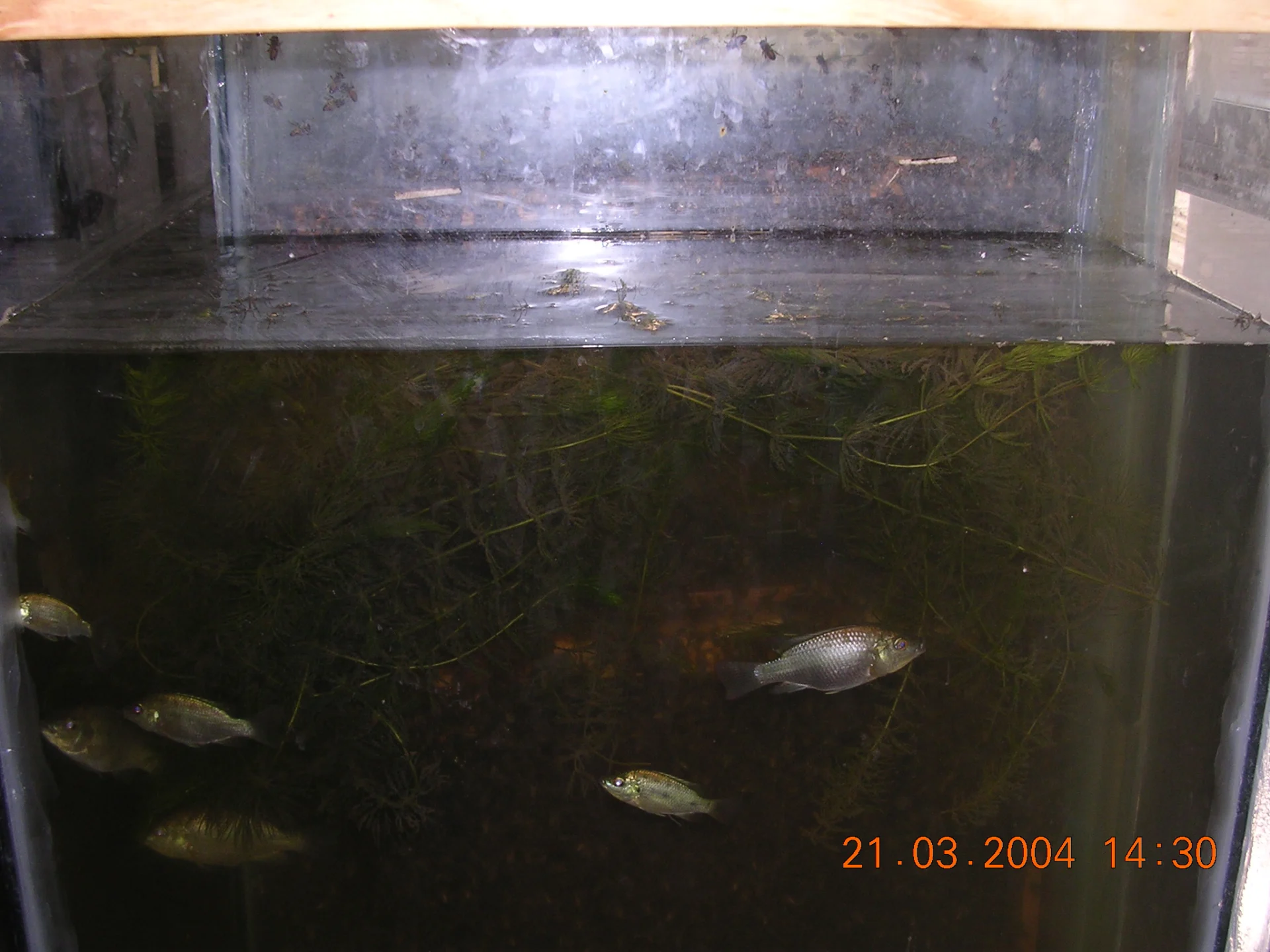

This is a beehive observation hive in a fishtank I built in 2004. Excuse the pictures – cameras were just not what they are today back then. But the important thing here is that the design of this hive had a U-shaped beehive consisting of single frame thickness combs. There was an air gap on the inside where you could stick your head inside the hive (protected by glass) and then you could watch the bees. The hive was buffered at a constant temperature. I set the fish tank heaters at 88°F and used a few water pumps to move the water around. This beehive was amazingly stable for an observation hive. The queen walked across the lower three frames in the U shape and laid eggs across the entire system. Eventually, the hive became very strong as they had to spend minimal energy maintaining temperature. The entire system went very well for months until in winter a rat crawled into the hive entrance pipe. The bees stung the rat to death and it died in the pipe blocking off their air supply and the hive suffocated.
How Can I Build Something Like This?
Work on your design on pieces of paper. Draw and draw again. Then calculate your bee space such that the distance between the surfaces of the comb and the glass is never greater than 1/4 inch. What I did (And this is from memory from 2004 so take it with a pinch of salt) was to take a piece of wood and cut that to the width I wanted the distance from one glass wall of the observation hive to the other to be. I took my table to the glass place and then I placed the three pieces of wood that made the glass frame spacers on the table.
The glass spacer planks I cut were this size -1¼ for the width of the top bar of the frame, and then we add ¼ inch on each side for the bee space. This means that your spacer plank becomes 1 3/4 inch. Other than this, the plans are yours to make and have fun with!!
Then I just measured and asked the guys to cut as I was going. This saved me a lot of time and fiddling around. People at glass-cutting places are really cooperative if you give them a jar or two of honey.
Putting the bees in is easy. As is the case for the fish. Put the bees in first. Then the fish. It also helps to check the system out first before you put the bees in – fill it with water and let it stabilize for a week. The last thing you want is for the contraption to spring a leak and drown your bees.
I hope this has helped you understand how to make your own, unique, observation hive. Building a beehive inside a fish tank is just a really fun thing to do! I definitely encourage you to try! If you enjoyed this challenge, please share! We need lots of bee/fish tanks!
Also read: Ultimate Guide: Create Stunning Bee Hotels for Your Homestead
Read more about: How To Build A Beehive Stand
FAQs
1. What is an observation hive?
An observation hive is a type of beehive designed with clear panels, typically glass, allowing beekeepers and enthusiasts to observe the behavior of bees, particularly the queen, workers, and brood activity.
2. Can you make an observation hive from wood?
Yes, you can use wood to make the frame and structure of an observation hive. However, the viewing panels are usually made of glass or clear plastic to allow visibility.
3. What are the benefits of using wood in an observation hive?
Wood provides insulation, structural stability, and a natural environment that bees are accustomed to. It is also easier to work with than other materials like metal.
4. How do I maintain the correct bee space in a wooden observation hive?
Bee space is critical to avoid bees creating unwanted comb. You should maintain a distance of around 1/4 inch between the frames and the glass for bees to move freely and prevent comb buildup.
5. Can a wooden observation hive keep the bees warm?
Yes, but it’s important to design the hive carefully. Observation hives often lose heat more easily than traditional hives, so adding insulation or placing the hive in a temperature-controlled environment can help.
6. How can I improve temperature regulation in a wooden observation hive?
You can use insulating materials around the wooden frame, or combine the hive with a heated element like a fish tank, as suggested in the article, to help maintain a stable temperature.
7. What materials are needed to build a wooden observation hive?
You’ll need wood for the frame, glass or clear acrylic for the observation panels, silicon sealant, a caulking gun, and some hardware like screws or nails. A fish tank heater can be added if you want to regulate the hive’s temperature.
8. Can I add a heater to a wooden observation hive?
Yes, adding a small heater (like those used in fish tanks) can help maintain a stable temperature, especially in colder climates. This is an optional but effective modification.
9. How do I prevent bees from attaching comb to the glass?
Maintaining the correct bee space (1/4 inch between the comb and the glass) will help prevent the bees from attaching comb to the viewing panels. Regular hive maintenance also helps.
10. Is there a risk of bees overheating in a wooden observation hive with a heater?
Yes, if the heater is not carefully controlled. Ensure that the temperature is regulated, and the hive is well-ventilated to avoid overheating, which can stress the bees.
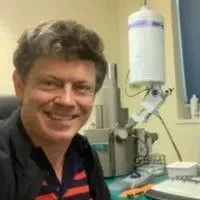
Dr. Garth A. Cambray is a Canadian/South African entrepreneur and beekeeper with 28 years of experience in apiculture and specializes in adding value to honey. His Ph.D. research developed a new advanced continuous fermentation method for making mead that has resulted in a number of companies globally being able to access markets for mead. His company, Makana Meadery, exports honey mead to the USA where it is available to discerning connoisseurs. He has also developed technologies to commercially manufacture organic honey vinegar in Zambia for export globally. He holds a few patents globally in the ethanol industry and believes in technology and knowledge transfer for human development and environmental sustainability. One of his proudest achievements is the fact that the wind farm he started at one of his old apiary sites has essentially made his hometown carbon neutral.


